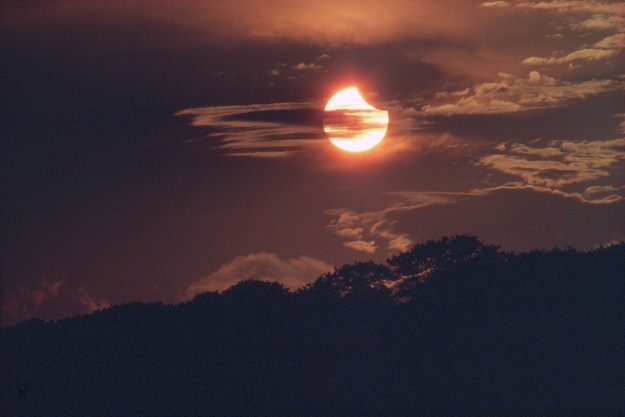How to photograph April’s solar eclipse, according to Nikon

Excitement is building for next month’s total solar eclipse that will see the moon’s shadow fall across a large part of the U.S., from Maine in the northeast all the way to Texas in the south.
Folks who make their way to the best viewing spots are reminded to protect their eyes by using specially designed solar specs, or other safe viewing devices, when witnessing the celestial event on April 8. Others may want to photograph the moment the moon comes directly between our planet and the sun (solar specs are still required!), and Nikon on Thursday shared a video offering some handy tips on how to do just that.
Nikon ambassador Mike Mezeul II highlights the different settings you might want to use when photographing the coming total solar eclipse. The tips are more for standalone cameras than smartphones or basic point-and-shoots, and while the video focuses on Nikon camera settings, they should look familiar to those with non-Nikon cameras, too.
He also notes how the eclipse will go through various phases, including the diamond ring effect where a tiny part of the sun breaks through from behind the moon to create such an effect, and totality where the moon briefly comes directly between Earth and the sun.
Preparations for the shoot include getting a decent solar filter for your camera, which reduces the sun’s visible and infrared energy by a factor of around 100,000.
Other tips include shooting in RAW so that you can pull out more detail later on when you edit your images, though Mike adds that if you’ve only ever shot with JPGs, then stick with that for now. With the movement of the Earth and the moon, and possibly windy conditions, a fast shutter speed is recommended, too. A low ISO for relatively noiseless images, and an aperture of around f8 should also be possible.
Mike explains how you will need to make some quick adjustments between the diamond ring effect and totality, including removing your solar filter. A process known as bracketing, where the camera captures the same scene at different settings for a final image with more dynamic range, is recommended for totality, so if you’re not familiar with it then it’s worth learning more about it before April 8.
Indeed, Mike recommends you practice the entire routine before the big day so that you’re not left panicking during the special event. After all, you want to actually enjoy it!
NASA also offers some useful information about April’s total eclipse, a phenomenon that won’t be happening in the U.S. again until 2044.
Editors’ Recommendations
-
Warby Parker offering free eclipse specs for April’s celestial event -
Watch NASA video showing Saturday’s stunning ‘ring of fire’ eclipse -
How to watch a rare hybrid solar eclipse -
You can watch Tuesday’s total lunar eclipse even if it’s cloudy -
How to watch the total lunar eclipse this week
![]()
Not so many moons ago, Trevor moved from one tea-loving island nation that drives on the left (Britain) to another (Japan)…
How to watch this week’s solar eclipse in person or online

This Tuesday, October 25, a partial solar eclipse will be visible in some parts of the world as the moon passes between the Earth and the sun. Around a quarter of the sun’s face will be obscured behind the shadow of the moon in what will be the final eclipse of 2022.
Partial eclipse of the Sun, 20 July 1982. Captured from Harefield in the UK. Robin Scagell/Galaxy
This is how the lunar eclipse looked from space

An astronaut aboard the International Space Station (ISS) managed to photograph the awesome sight of Monday’s lunar eclipse.
Recent ISS arrival Samantha Cristoforetti tweeted several photos (below) of a partially eclipsed moon, as seen from the orbital facility about 250 miles above Earth.
How to watch tonight’s lunar eclipse, online or in person

There’s a chance to observe a special astronomical event, as the night of May 15-16 will see a total lunar eclipse. It’s a great opportunity to stop and look up into the sky, and we’ve got information on how you can watch the event — whether you want to head outside and see it yourself or stay wrapped up warm inside and watch online.
What to expect from the lunar eclipse
A telescopic visualization of the total lunar eclipse happening May 15-16, 2022. NASA/Goddard/Ernie Wright
An eclipse happens when the moon is on the exact opposite side of Earth than the sun, so that Earth casts a shadow over the moon. It’s relatively common for there to be partial lunar eclipses, in which part of the moon is shadowed by the Earth, but the event this weekend is a rarer total lunar eclipse. This happens around once every one-and-a-half years, when the moon is in complete shadow.


